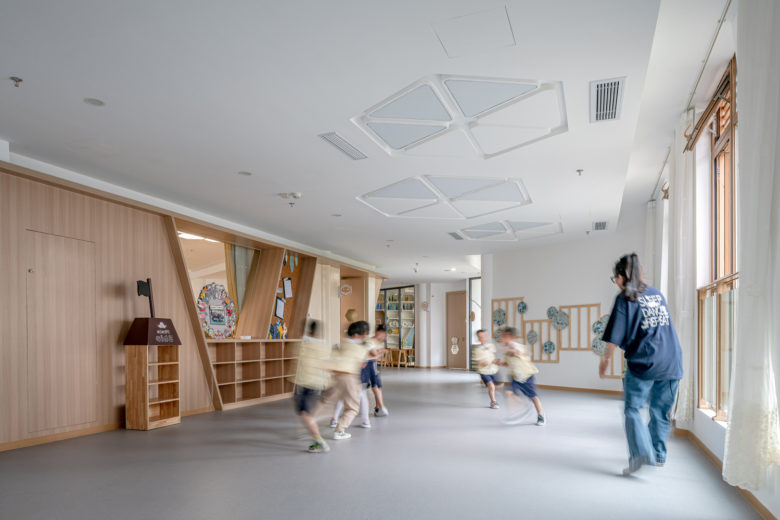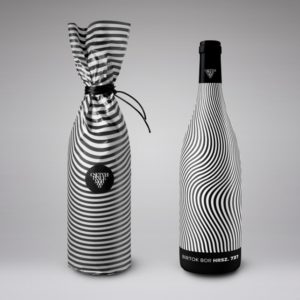

The kindergarten is located in Binjiang District, Hangzhou, covering a total area of nearly 7,800 square meters. As an area with numerous high-tech industries like Alibaba, the rising ranking of Binjiang District among all districts in Hangzhou is accompanied by the demanding standards for educational facilities in recent years. In an emerging and flourishing urban area that benefits from science and technological progress, the key challenge facing the architects was how to embody the contemporary sense of educational facility. Finally, given the tight schedule and limited costs, the architects managed to construct an “attractive” kindergarten architecture through a modular concept combined with rapid construction.
The project was located in a very demanding site. According to the Standards for Construction of General Kindergarten B33/1040-2007 released by Zhejiang Province, the total land area of the project and average area of its classrooms are only 78% of the lower limit of the standard value respectively. Since it is surrounded by high-rise buildings, its sunshine condition is not that good. There is an angle of 60° between the diamond-shaped building land and due south. If it adopted the traditional orthogonal grid layout, the lighting direction, the sunshine duration and the land use efficiency couldn’t be ideal at the same time.
In view of this, the “hexagonal” motif became a way to solve problems, as it is the most common shape in nature and has the dual advantages of “complete filling” and “highest efficiency”. The combination of hexagonal honeycombs conforms to the oblique angle of the site to introduce lighting to the maximum extent. What’s more, it also takes into account several requirements like favourable orientation, sunshine duration and site fitting rate.
The hexagonal motif created a lot of non-right-angle spaces, thus fitting into the nature of children who are fond of exploring and playing. In order to further break the monotony of the corridor design, a zigzag “activity zone” emerged as the skeleton of building, which connects spatial units and provides a large number of communication spaces of different sizes, shapes and privacy, aiming at encouraging children to explore and communicate with others.
On the other hand, the architects managed to expand the space in three dimensions, to ensure the outdoor activities for children in cramped space. The building volume set back along the city roads to form rooftop terraces with different elevations, which are open to students as an extension of the ground-floor activity space.
Under the requirement of assembly rate, the project attempted to respond to the regional background of the “Science and Technology Industry Cluster” by introducing new materials and technologies from the latest urban architecture. The finish coat of exterior facing used white corrugated color steel plate on the basis of traditional masonry window and wall system.
In the context of China’s construction practice, color steel plates are usually adopted in industrial plants for their low costs and convenience for construction, and few architects use them in Kindergartens. In fact, color steel plates have unique advantages such as durability, waterproofness and integrality. Its unique and delicate texture combined with the matching of warm tone brings people a fresh and natural visual experience, which exactly meets the requirements of the children’s educational space.
The entrance canopy is made of wooden bamboo, and its hexagonal umbrella-like structure shapes the distinctive identity of the building. Wooden bamboo is a new material that is made of natural sinocalamus affinis hot-press glued with phenolic resin, featuring high strength, low carbon, environmental friendliness, high weatherability, flame retardancy and long life. The using of it in the surfacing of steel not only protects the structure itself, but also conveys a natural image.
The major structure aboveground adopted the multi-layer steel frame system, and the pre-processing in the factory substantially reduced wet construction. Finally, with relatively limited construction costs and demanding conditions, the architects created a refreshing kindergarten architecture through ingenious space application and construction strategies.











Add to collection










